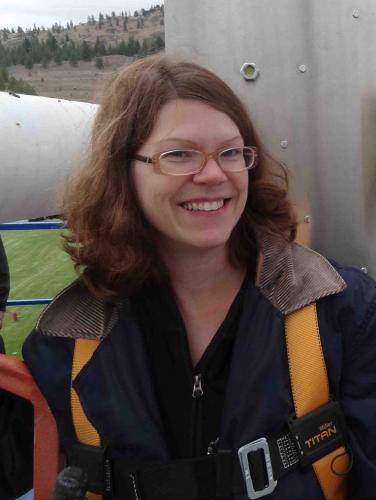
Laura Newburgh (Assistant Professor of Physics) has been awarded a prestigious NSF Faculty Early Career Award. Her proposal, entitled Towards Dark Energy – A High-precision Drone-based Calibrator for Next-Generation 21cm Cosmology Experiments
will fund her to develop and use radio telescopes to map out the expansion history of the Universe.
The accelerated expansion of the Universe was discovered from supernova measurements in 1998 and no fundamental theories for this acceleration have yet been experimentally verified. As a result, cosmologists inserted a new component (`Dark Energy’) into cosmological models, but the underlying theories to explain the accelerated expansion involve either (i) a modification to General Relativity or (ii) a new component in fundamental theories of particle physics that would produce a unique time dependence of the expansion rate. Either would revolutionize our current models of fundamental theories of physics. To answer these questions scientists must measure the expansion history of the Universe across the past 11 billion years and pin down the influence of Dark Energy on the expansion. The most promising path for this comes from measurements of galaxies (measuring >100,000 galaxies across a wide swath of the sky). Unfortunately, current and next-generation optical galaxy surveys are restricted in how far back in time they can see due to limitations in detector technology.
Radio telescopes do not have these limitations, and offer a promising solution to make radio surveys of galaxies across most of cosmic time. This measurement has never been attempted before and Newburgh and her colleagues are now building radio telescopes designed to achieve this goal. However, they already know that to be successful they must understand their telescope characteristics extremely well, in particular the telescope ‘beam’ (like a beam of light, a telescope points at one place and focuses there, and we must know what that beam looks like on the sky). With Newburgh’s CAREER grant, she will be developing a beam mapper using a quadcopter drone. Together with her research group she will fly a radio source on the drone above the telescopes and use the radio data and drone position to make a map of the beam. This requires developing a stabilized noise source to be flown on the drone, improved sensors for better drone position accuracy, and new analysis techniques – particularly a mathematical transformation to use measurements made near the dish and infer what they look like on the sky. The end result will be an important measurement for cosmology radio telescopes and a beam mapping technique that is demonstrated to work at the high precision required for Dark Energy science goals.